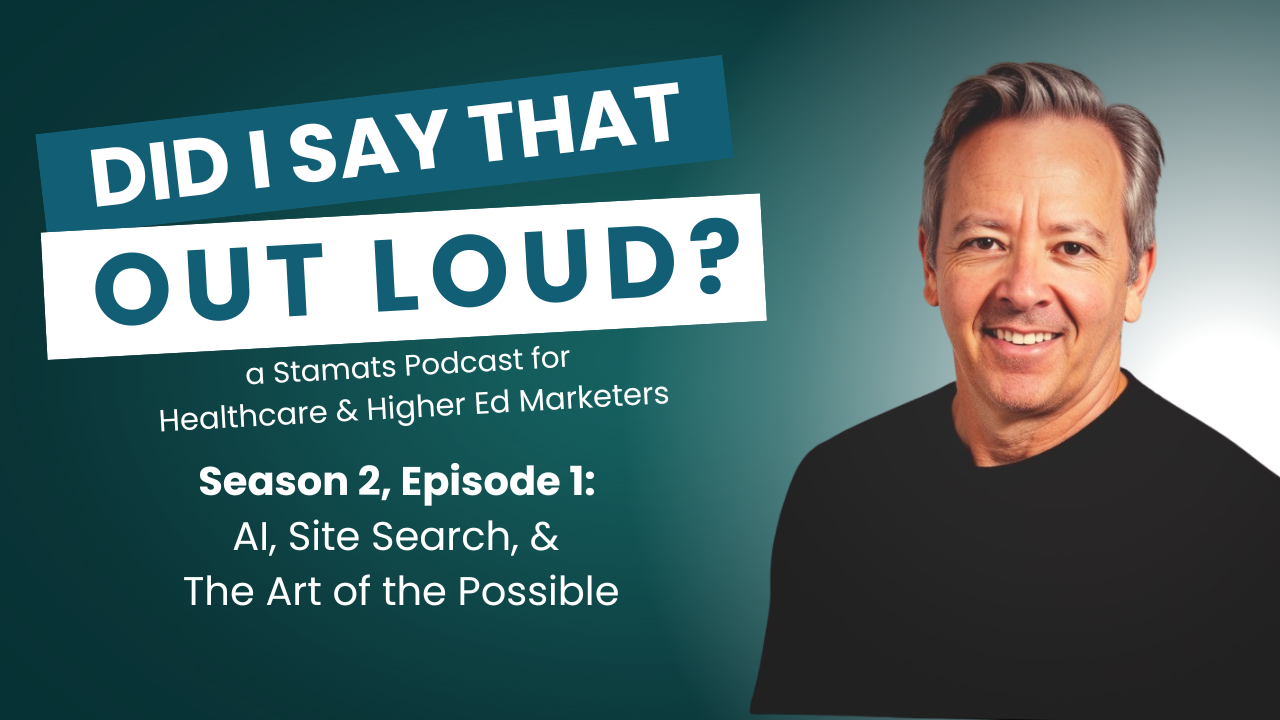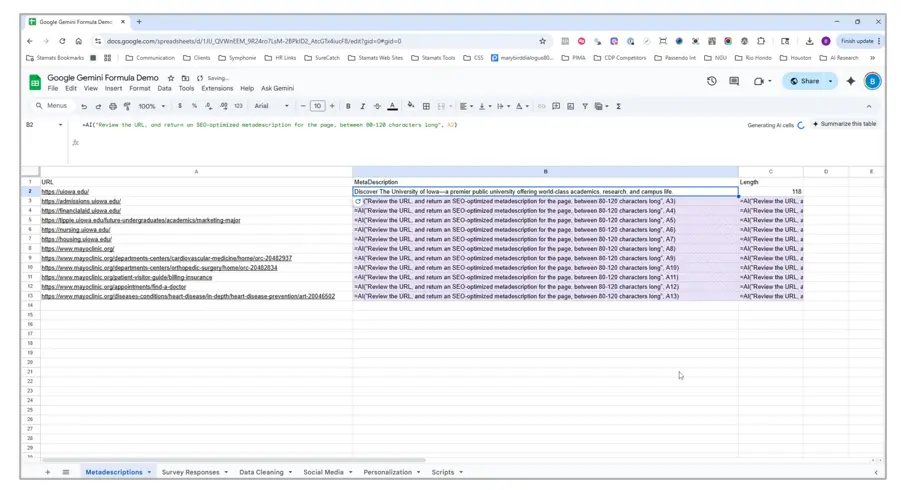Written by
on

With a demographic cliff looming for the higher education sector, it’s more important than ever for enrollment and admissions offices to use all the tools at their disposal to engage prospective students.
Between the peak of college-aged students coming in 2025 and the falling percentages of students choosing to attend college, many of my clients and friends in enrollment are understandably nervous.
But Allison Turcio, AVP of Enrollment and Marketing at Siena College, and her team are up to the challenge. She and her colleagues collaborate to support enrollment goals. They leverage data to build real relationships with prospective students, steering their institution away from the enrollment cliff and toward matriculation greatness.
Allison has been with Siena since 2006 in roles including Associate Director of E-Communications and Director of Digital Strategy. She is a lecturer in marketing and host of the podcast The Application with Allison Turcio. She holds an EdD from Northeastern University.
She kindly joined us for a Zoom conversation about how data done right drives enrollment marketing success. Here are some highlights (our conversation has been edited for clarity).
The Good Stuff: Collect Qualitative Data
Stamats: What does key data mean in the modern enrollment context, and what are some of the data points colleges miss when they’re starting to gather data about prospective students and families?
Allison Turcio: We’re very good at collecting and tracking quantitative data in general, or demographic data. We know their address. We know their high school, we know their GPA. We know the major they’re interested in. The thing that colleges often miss is the qualitative data.
We should be asking questions to understand what matters most to that family. What are their top decision-makers, and what’s most important to them in the college experience? I think that’s the piece that we often miss.
Stamats: How do you introduce those types of questions, and when is a good time to do that?
Allison: I think the point of application is a great moment to leverage because now you’re going to introduce the admissions counselor who’s going to review that student’s application. You can say to them, “I know that what you wrote on the application and the information I have is sort of one-dimensional. I’d like to know more about you before I read your application. So, can you tell me about what you’re looking for in your college experience? And what’s important to you?”
I think that there’s some real power in asking that. The counselor is then able to have a robust conversation with the student. Depending on how they answer, you know the right professor to connect them with, or you know the right student to connect them with, or you know we should have a chat about what to look for in pre-med programs.
I’d like to know more about you before I read your application. So can you tell me about what you’re looking for in your college experience? ~Allison Turcio
Stamats: What are some data points that colleges often collect but don’t use to their full extent?
Allison: About 70% of what we ask for is on a Request for Information Form. When you have all these RFI form fields, there’s an expectation that you’re going to have personalized information about each student based on that form. And that type of personalization doesn’t usually get delivered. Colleges need to ask themselves, “What do we really need to start a relationship and keep it simple?”
There are also things on a student’s application that can be important. An admissions counselor might review the activities a student was involved in in high school. That could be leveraged for marketing. The student rides horses and is passionate about equestrian? We need to get information about the equestrian team in front of that student.
What students talk about in their essay is often a missed opportunity also. That’s a connection point to the student. You can say, “I’m so impressed with your resiliency or with the leadership skills you’ve developed,” or whatever it is. Why aren’t we talking to them?
The other thing is where they came from, their inquiry source. We know that. Why do we talk to everybody the same way? Why do we talk to people who came from a search purchase the same way as people emailed proactively and the same way as people whose first touch was to sign up for a visit? They come with different levels of engagement, but often we’re responding to them all in the same manner.
Related reading: Doing Enrollment Marketing Differently with Audience Data
Get Personal with Data-Driven Enrollment
Stamats: So, how do successful colleges use that data, beyond delivering targeted content, to drive enrollment?
Allison: The way to stand out in trying to be personal and make a real connection is to ask real questions. If you’re asking a personal question, that’s different from “Fill out this form to tell me more about you.”
From there, you’re not necessarily serving up content that is a set process. You’re going to now talk to that student individually, one-to-one. That is now your relationship. If you try to flip it back to sort of formulaic content, it will feel like your initial outreach, that personal touch, was inauthentic.
The challenge is to be able to scale that, but it works. We know it works. Students who have one-to-one communication with our admissions counselors at Siena enroll at more than twice the rate of the students who don’t.
This is a cultural shift from “What do we want to say?” to “What do they need from us in the moment?”
Related reading: Recruitment Strategies That Nurture Dual Enrollment
Get Together & Get Buy-In
Stamats: When you share these insights with your colleagues in enrollment and marketing, what are some of the types of pushback you get?
Allison: What I’m talking about is hard to scale. It’s a lot of one-to-one communication. One of the things I hear is, “We’re already at max capacity; how do we add that on?” I don’t think you should add it on. I think it’s about reforming or reengineering the work.
You’ve got to find technology, systems, and processes that can help with efficiency so your team is freed up to do this. Because this relationship building is where you’re going to have the ROI. That’s where you’re going to really meet your enrollment goals. It’s not extra work; this is the work.
Stamats: What are some strategies you and your team use to improve efficiency and optimize your time?
Allison: The way we find efficiencies and the way we get people working around these ideas is that we create them together. We almost never have an activity or an initiative that comes top-down. We just completely reengineered our marketing strategy last year, and we had 12 or 13 people around the table working on it. We had admissions, communications, financial aid, and enrollment managers. We had a couple of students.
As everyone becomes aware of the opportunity, they begin to find a way. They say, “Well, I don’t need to be doing this, but I do need to be doing this.” It changes the individual work when you bring everyone to the table in that way. That’s the number one way we found efficiencies and started to do our work differently. There’s a buy-in across the board because we’ve built it together.
That’s the number one way we found efficiencies and started to do our work differently. There’s buy-in across the board because we’ve built it together. ~Allison Turcio
Related reading: Drinking from a Fire Hose? 5 Tips to Manage Higher Ed Marketing with a Lean Team
Opportunity to Change Perception
Stamats: Looking to the future, what drives your passion for this work?
Allison: We have a responsibility as marketers to get this right and get this right collectively. We can help with the perception issue in higher ed. If we’re rethinking our work and rethinking how we serve families instead of talking at them, we can make a difference in what’s happening.
If we can help change the perception, then that can increase college-going, especially among students who are currently underrepresented in the college-going population. It matters, and it’s bigger than just what you’re doing at your desk each day.
I really believe that collectively we can do this better. That’s why I do my podcast. That’s why I do my newsletter: Because if we can do this better, we can impact the perception issues. And if we can impact the perception issues, we can impact college-going.
Want to help your enrollment team level up before the cliff arrives? We can help. Schedule a time to talk with Stamats experts today.


